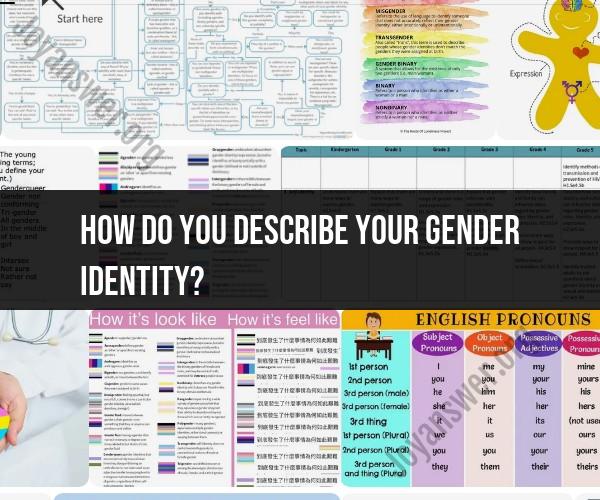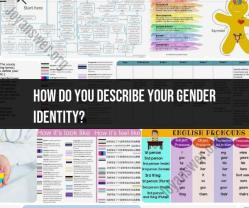How do you describe your gender identity?
Gender identity is a deeply personal and individual experience, and how a person describes their gender identity can vary widely. Here are some common ways people may describe their gender identity:
Cisgender: Someone whose gender identity aligns with the sex assigned to them at birth. For example, someone assigned female at birth who identifies as a woman is cisgender.
Transgender: Someone whose gender identity differs from the sex assigned to them at birth. For example, someone assigned male at birth who identifies as a woman is transgender.
Non-Binary: A gender identity that doesn't fit within the traditional binary concept of male and female. Non-binary individuals may identify as a mix of both genders, as neither gender, or as a different gender entirely.
Genderqueer: Similar to non-binary, genderqueer individuals may identify outside of the traditional gender binary and may have a fluid or ever-evolving sense of gender.
Genderfluid: A gender identity characterized by a fluid or changing experience of gender. Genderfluid individuals may feel different genders at different times.
Agender: A gender identity characterized by a lack of gender or the absence of a specific gender identity.
Two-Spirit: A gender identity recognized in some Indigenous cultures in North America, which often involves a combination of both masculine and feminine qualities.
Bigender: Identifying as two genders, either simultaneously or at different times.
Demigender: Identifying partially but not wholly as a particular gender.
Androgynous: A gender identity and presentation that combines both masculine and feminine qualities.
Questioning: Someone who is still exploring and questioning their gender identity and may not have a fixed label.
It's important to note that this list is not exhaustive, and gender identity can be incredibly diverse and unique. Additionally, individuals may use different terms to describe their gender identity based on their cultural, personal, and social contexts. Respecting and using the terms and pronouns that individuals prefer is crucial in promoting understanding and inclusivity. People should be encouraged to express their gender identity in a way that feels authentic and true to themselves.


